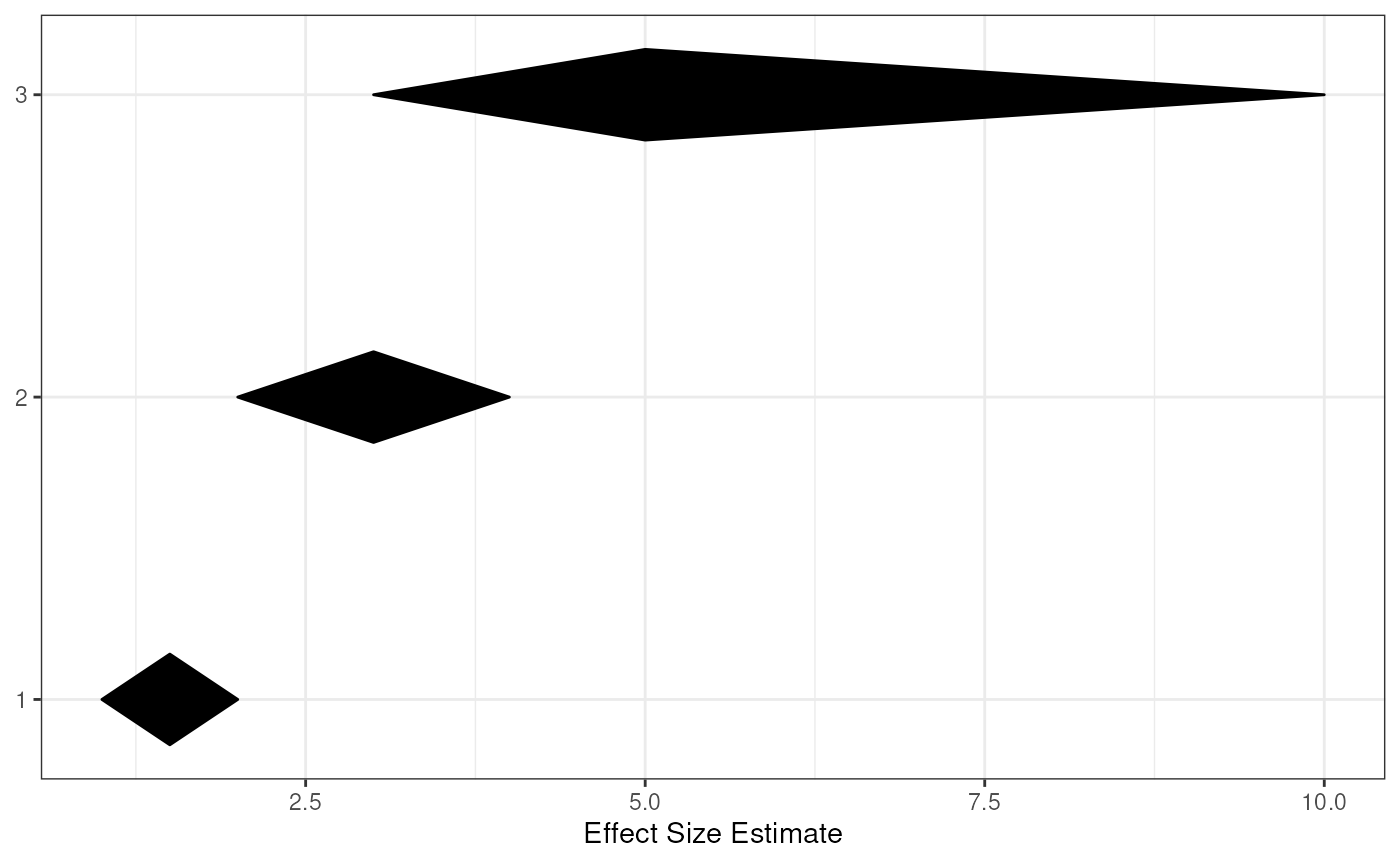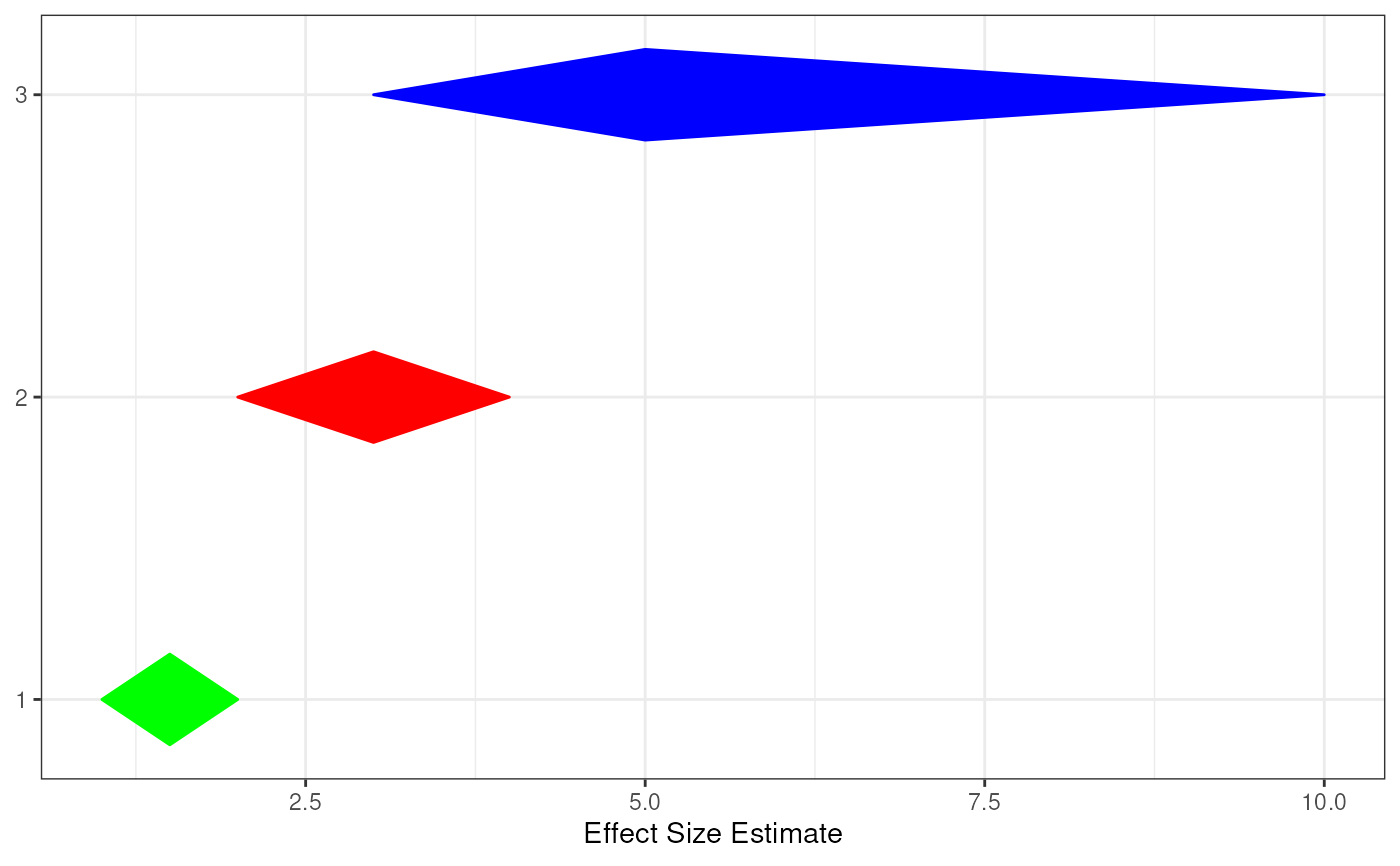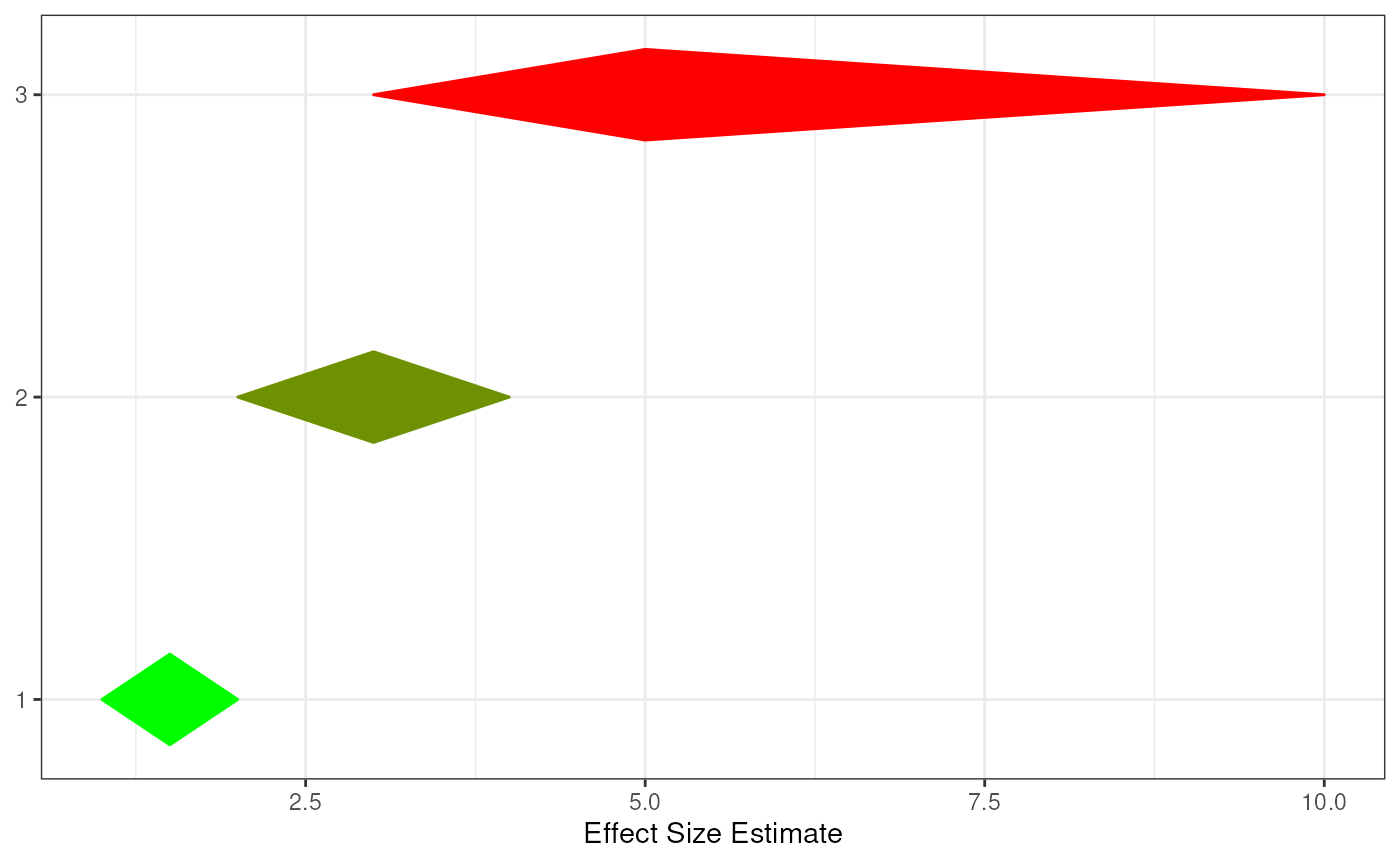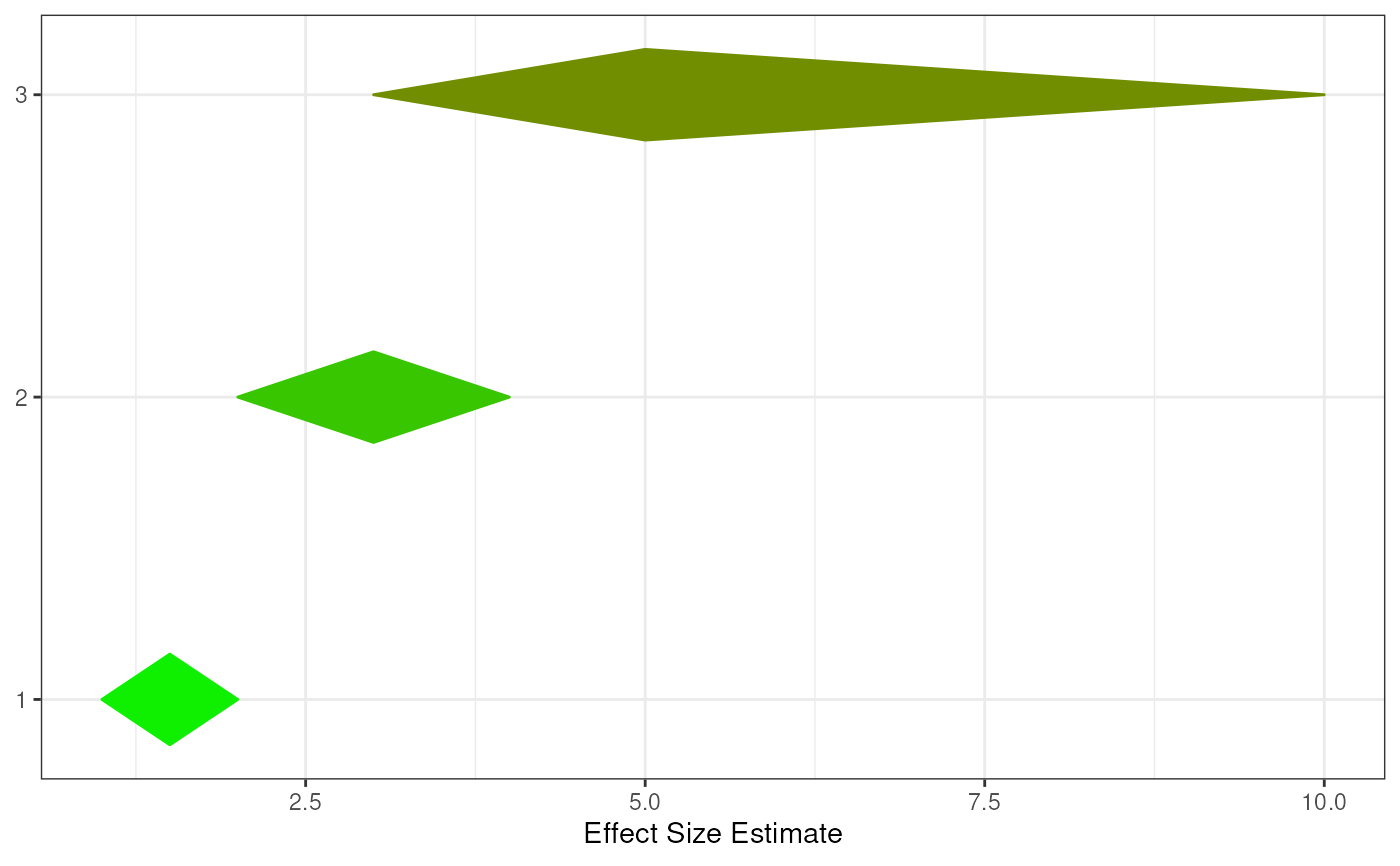This function constructs a diamond plot using ggDiamondLayer().
It's normally not necessary to call this function directly: instead, use
meansDiamondPlot() meanSDtoDiamondPlot(), and
factorLoadingDiamondCIplot().
diamondPlot(
data,
ciCols = 1:3,
colorCol = NULL,
otherAxisCol = NULL,
yValues = NULL,
yLabels = NULL,
ylab = NULL,
autoSize = NULL,
fixedSize = 0.15,
xlab = "Effect Size Estimate",
theme = ggplot2::theme_bw(),
color = "black",
returnLayerOnly = FALSE,
outputFile = NULL,
outputWidth = 10,
outputHeight = 10,
ggsaveParams = ufs::opts$get("ggsaveParams"),
...
)Arguments
- data
A dataframe (or matrix) containing lower bounds, centers (e.g. means), and upper bounds of intervals (e.g. confidence intervals).
- ciCols
The columns in the dataframe with the lower bounds, centers (e.g. means), and upper bounds (in that order).
- colorCol
The column in the dataframe containing the colors for each diamond, or a vector with colors (with as many elements as the dataframe has rows).
- otherAxisCol
The column in the dataframe containing the values that determine where on the Y axis the diamond should be placed. If this is not available in the dataframe, specify it manually using
yValues.- yValues
The values that determine where on the Y axis the diamond should be placed (can also be a column in the dataframe; in that case, use
otherAxisCol.- yLabels
The labels to use for for each diamond (placed on the Y axis).
- autoSize
Whether to make the height of each diamond conditional upon its length (the width of the confidence interval).
- fixedSize
If not using relative heights,
fixedSizedetermines the height to use.- xlab, ylab
The labels of the X and Y axes.
- theme
The theme to use.
- color
Color to use if colors are specified for each diamond.
- returnLayerOnly
Set this to TRUE to only return the
ggplot()layer of the diamondplot, which can be useful to include it in other plots.- outputFile
A file to which to save the plot.
- outputWidth, outputHeight
Width and height of saved plot (specified in centimeters by default, see
ggsaveParams).- ggsaveParams
Parameters to pass to ggsave when saving the plot.
- ...
Additional arguments will be passed to
ggDiamondLayer().
Value
A ggplot2::ggplot() plot with a ggDiamondLayer() is
returned.
Examples
tmpDf <- data.frame(lo = c(1, 2, 3),
mean = c(1.5, 3, 5),
hi = c(2, 4, 10),
color = c('green', 'red', 'blue'));
### A simple diamond plot
diamondPlot(tmpDf);
 ### A diamond plot using the specified colours
diamondPlot(tmpDf, colorCol = 4);
### A diamond plot using the specified colours
diamondPlot(tmpDf, colorCol = 4);
 ### A diamond plot using automatically generated colours
### using a gradient
diamondPlot(tmpDf, generateColors=c('green', 'red'));
### A diamond plot using automatically generated colours
### using a gradient
diamondPlot(tmpDf, generateColors=c('green', 'red'));
 ### A diamond plot using automatically generated colours
### using a gradient, specifying the minimum and maximum
### possible values that can be attained
diamondPlot(tmpDf, generateColors=c('green', 'red'),
fullColorRange=c(1, 10));
### A diamond plot using automatically generated colours
### using a gradient, specifying the minimum and maximum
### possible values that can be attained
diamondPlot(tmpDf, generateColors=c('green', 'red'),
fullColorRange=c(1, 10));
